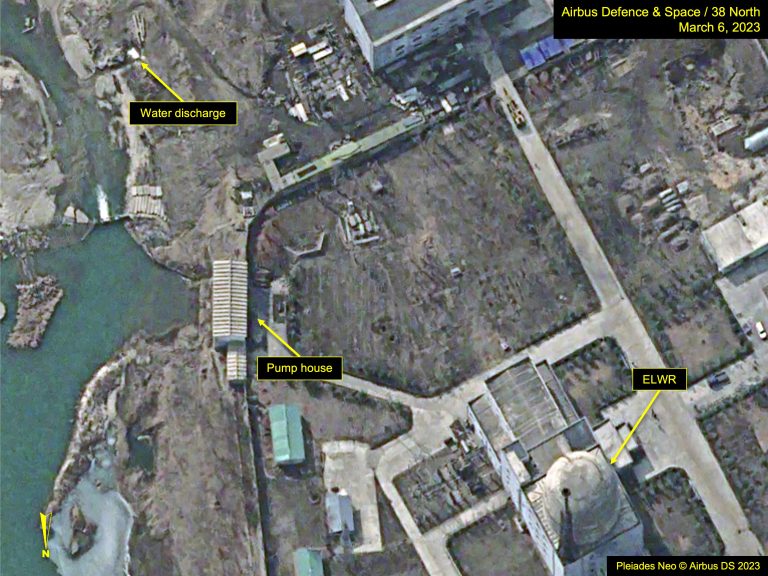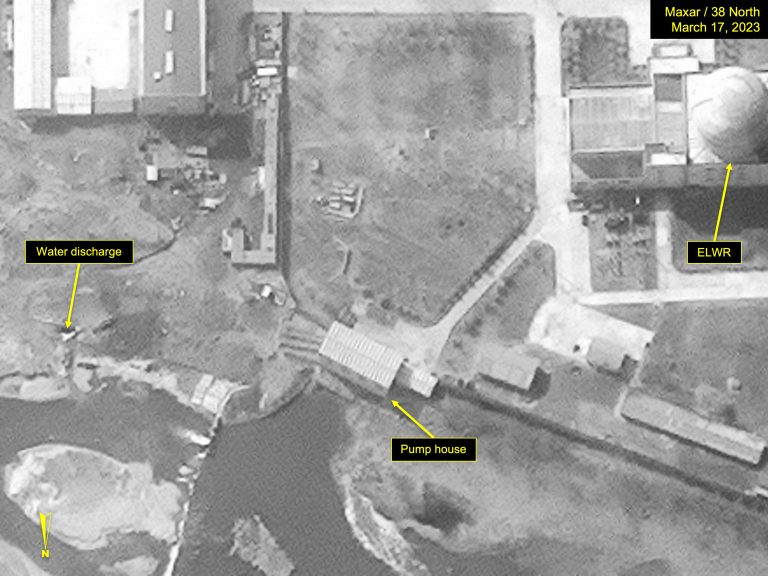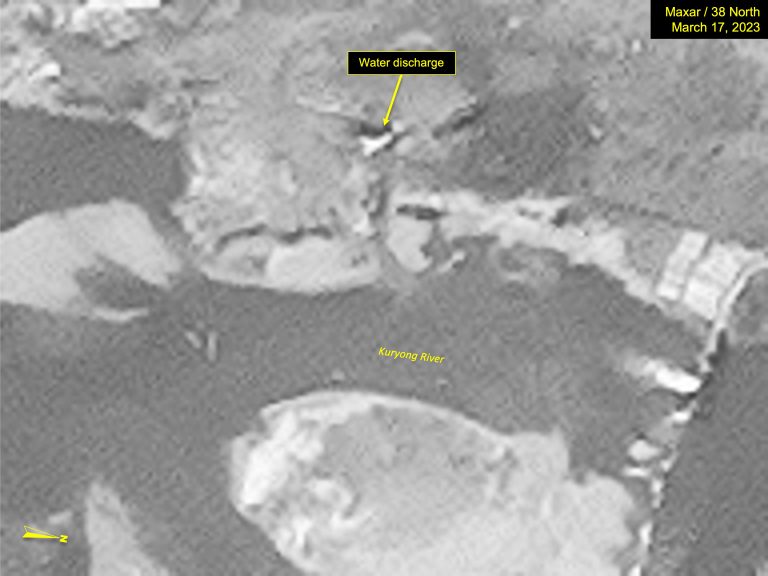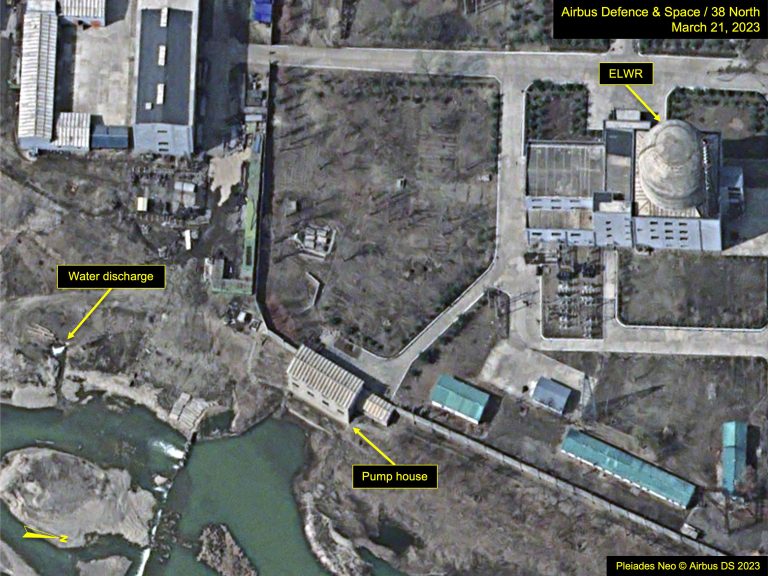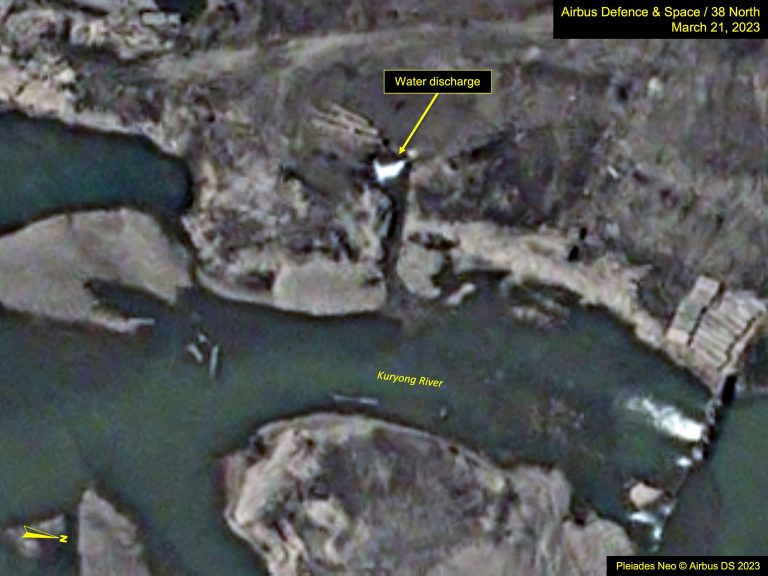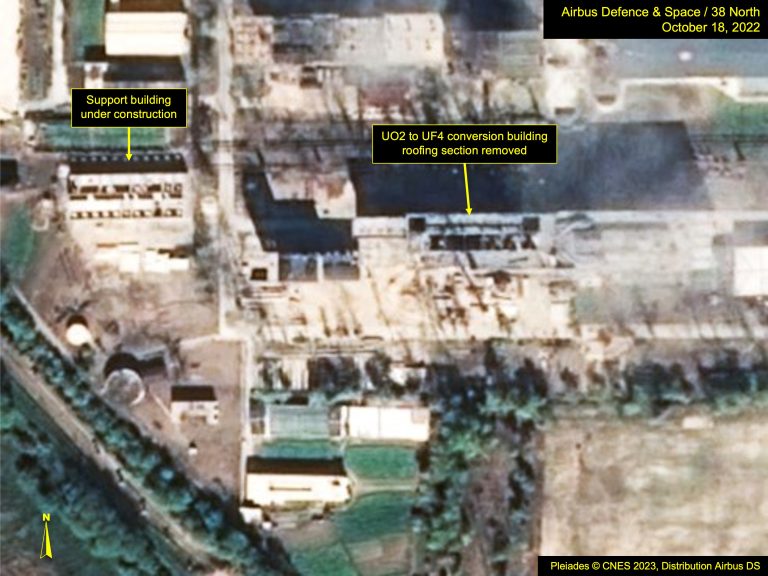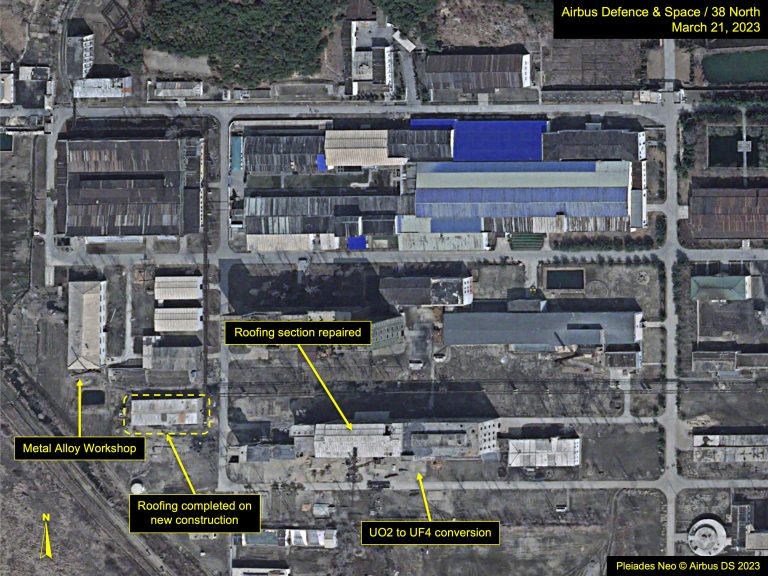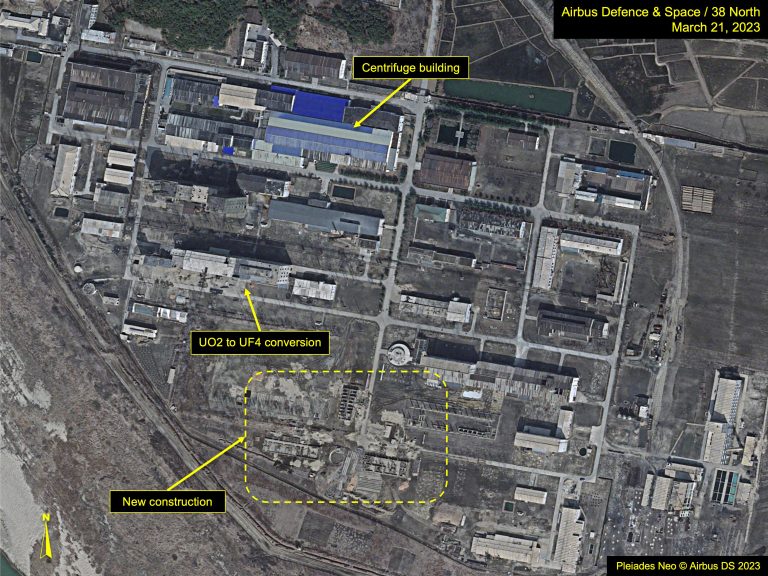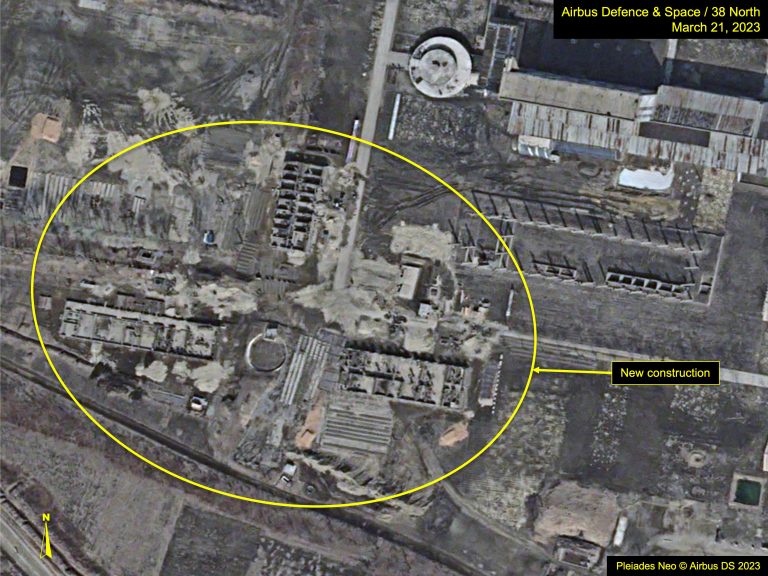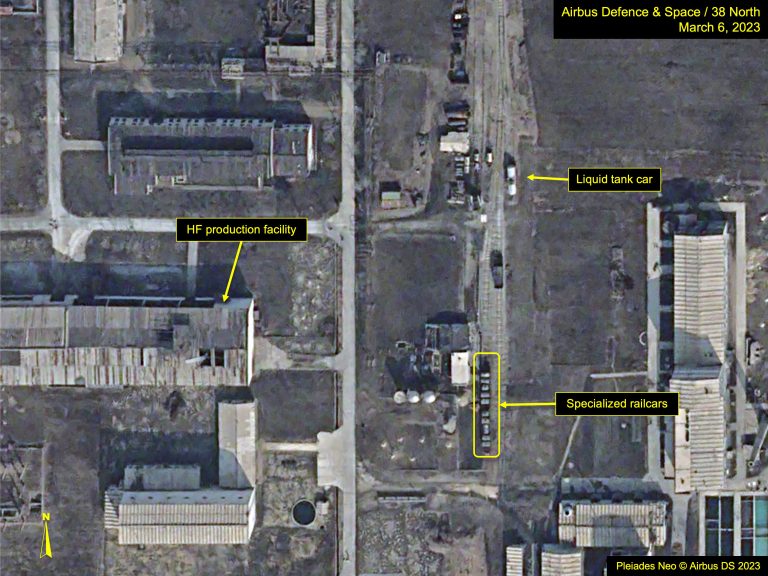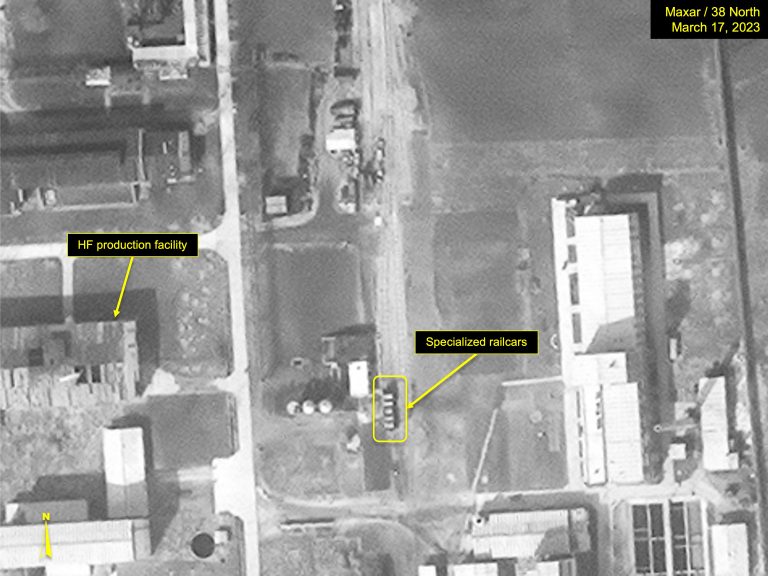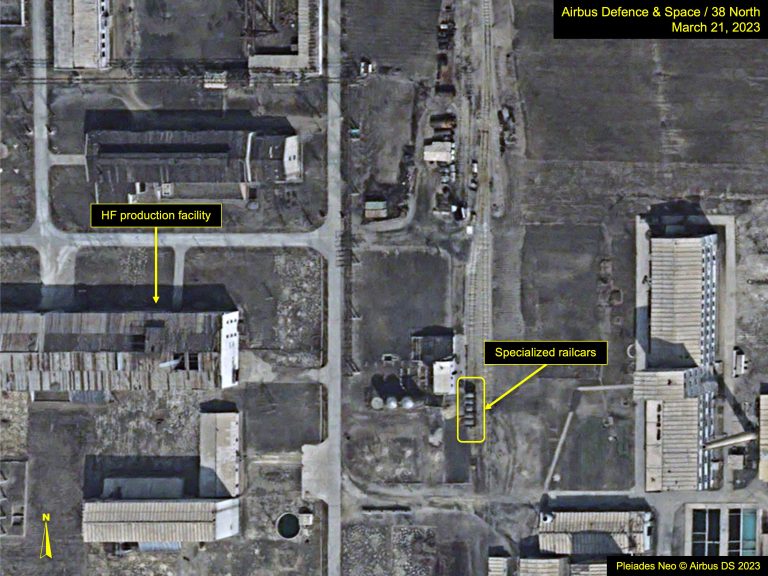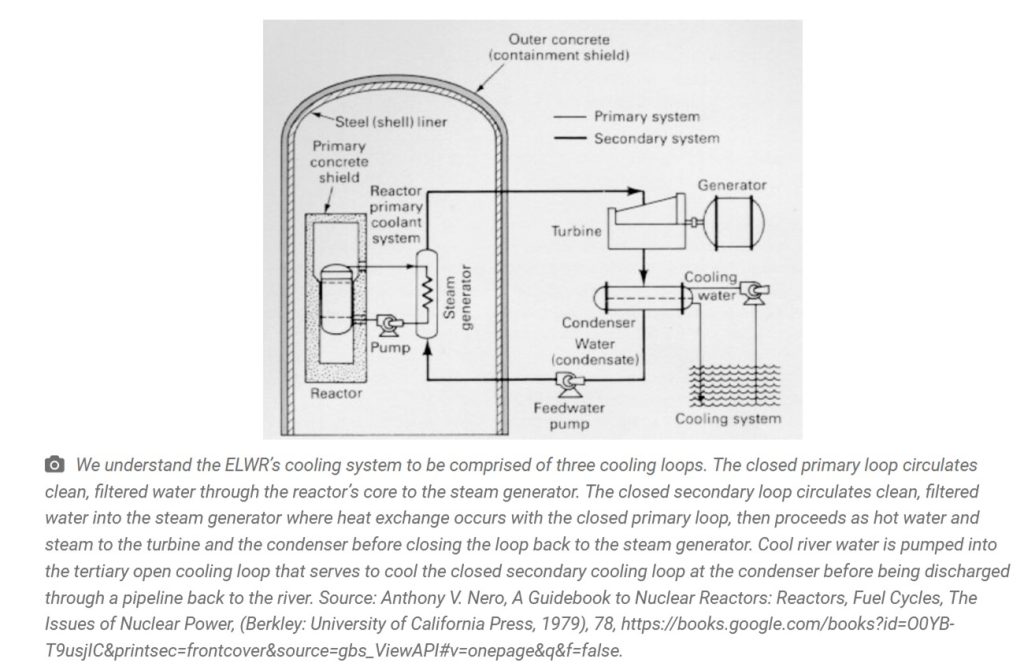Growing Activity at North Korea’s Experimental Light Water Reactor
Recent commercial satellite imagery of North Korea’s Yongbyon Nuclear Scientific Research Center indicates a high level of activity around the complex. The 5 MWe Reactor continues to operate, and construction has started on an additional support building around the Experimental Light Water Reactor (ELWR). Furthermore, water discharges have been detected that could be associated with testing of the ELWR’s cooling system. This is not the first time water discharges have been observed coming from the ELWR over the past few years but may indicate the reactor is nearing completion.
Additionally, new construction has started around the Uranium Enrichment Plant (UEP) area, likely intended to expand the uranium conversion capabilities. Together, these developments seem to reflect Kim Jong Un’s recent directive to increase the country’s fissile material production to expand its nuclear weapons arsenal.
The ELWR: New Construction
Satellite imagery from March 17 revealed the foundation of a new building measuring approximately 42 meters by 15 meters. The foundation appears to have approximately 20 rooms on the base floor. Given its location, this building will likely serve an administrative function, such as accommodating additional staff required to operate the reactor or providing research and engineering spaces.
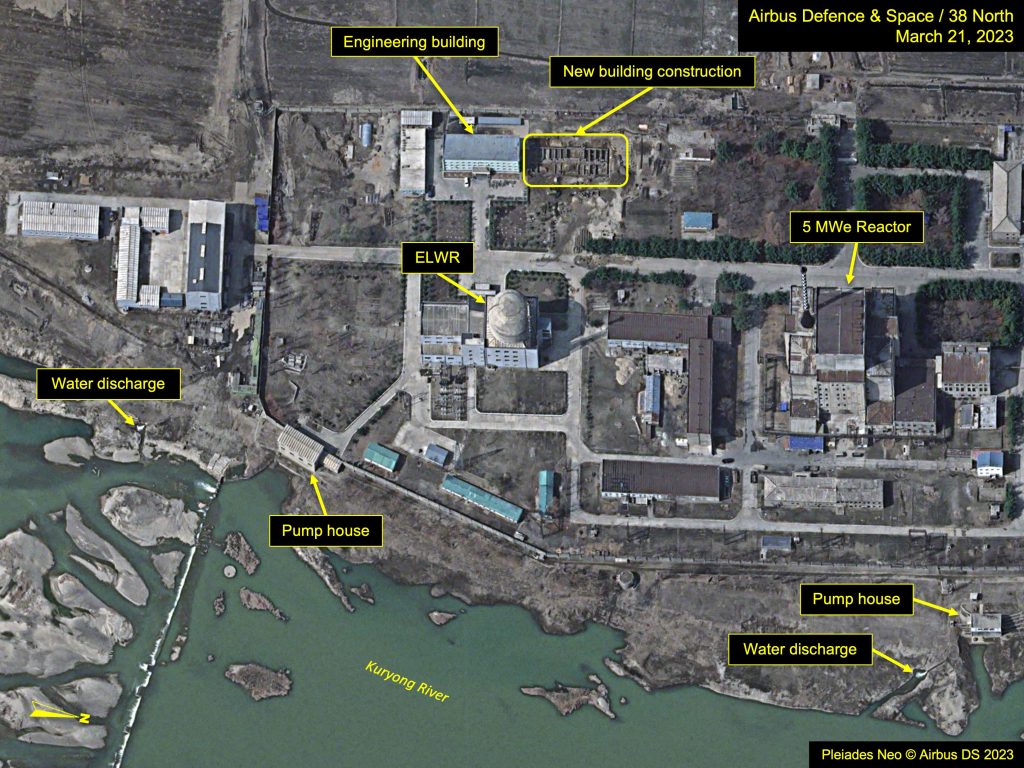
The building construction started in February in a space previously used as a construction material staging area and is the second new administration building that has been built near the engineering building—the first was completed in December 2022.
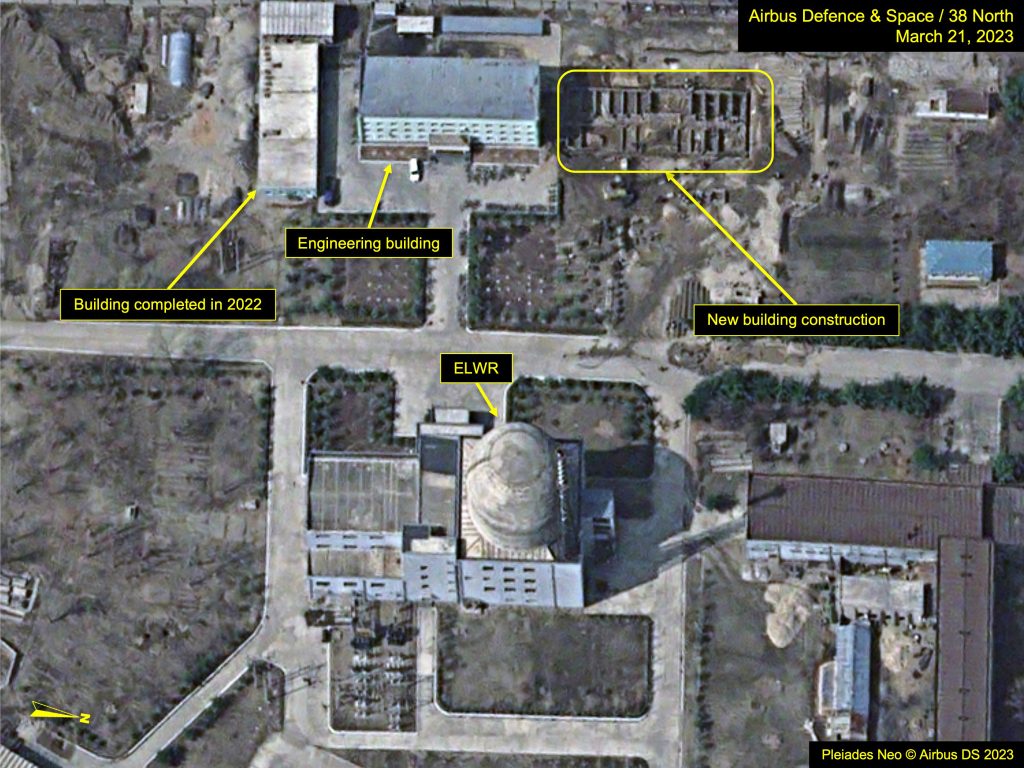
The ELWR: Preparations for Operations
On imagery from March 3, water discharge is observed coming from a pipe that empties into the Kuryong River approximately 75 meters south of the ELWR’s pump house. This is not the first time water discharge has been detected around the ELWR, but does suggest some activities are taking place within the reactor itself.
Imagery of trench work done in 2012 showed two substantial pipes running from the ELWR’s turbine building to the pump house. While only an onsite inspection can confirm the function of the actual cooling arrangements, the lines could be carrying the spent steam from the turbine to a river water cooled condenser in the pump house and condensed feedwater back to the ELWR steam generators. Alternatively, the condenser may be in the turbine building, and cooling river water is pumped in and out over those lines.
The discharge being observed now is not from the main discharge line, but from what has been termed the secondary discharge pathway. It could consist of river water-cooling discharge from other ELWR service/support systems. These support systems include normal radioactive decay heat removal (RHR) that must be performed when the reactor is shut down for refueling, maintenance or safety-related cooling for various emergency hot shutdown situations.
The emergency cooling systems are, by design, usually located entirely within the reactor building to prevent radioactivity release in the case of an accident. The RHR must be available for continuous operation when the reactor is on a scheduled hot shutdown to prevent damaging overheating from radioactive decay.[1] The amount of heat energy that must be carried away is considerably less than when the reactor is operating at full power, which may explain the small among of discharge seen from the secondary discharge pathway. RHR testing is part of readiness testing, as it needs to work reliably before the ELWR can be started.
Together, the new construction and this recent water discharge seem to suggest that the ELWR is nearing a transition to operational status.
5 MWe Reactor
The 5 MWe Reactor has been operating since July 2021. Based on the irradiation campaigns in 2003-2007 and 2013-2018, it is probably approaching the point of discharging spent fuel and refueling. However, there appears to be new construction work ongoing at the reactor’s Spent Fuel Storage Building, which may prevent a near-term fuel discharge.
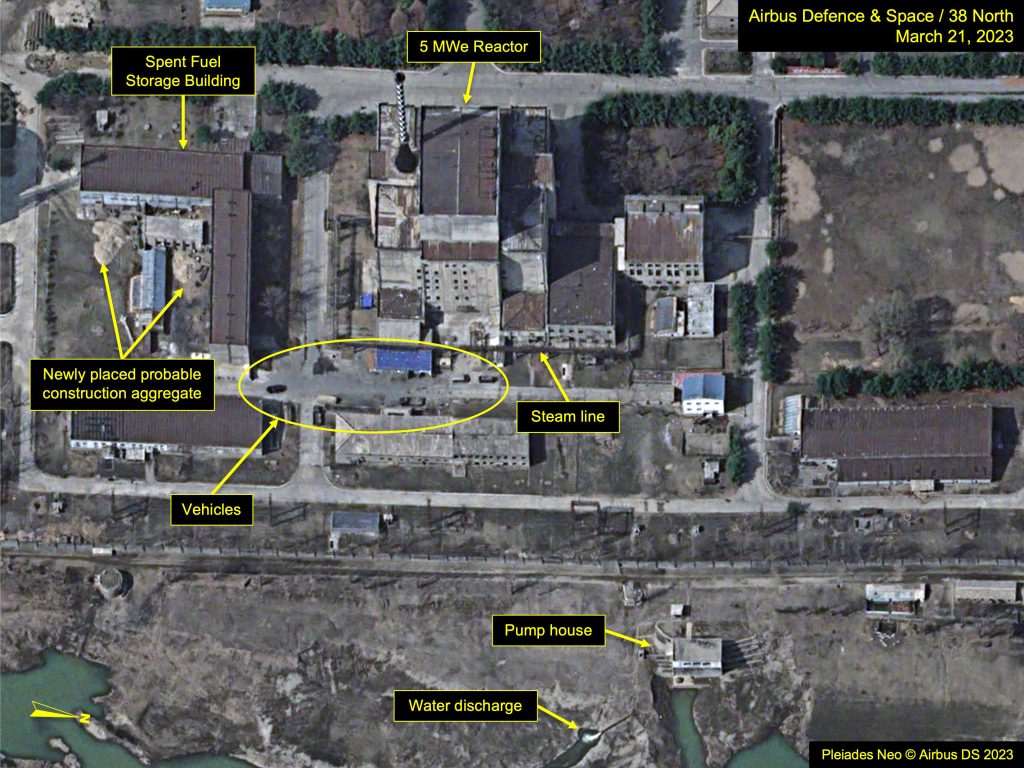
Uranium Conversion Area
For the past year, construction and refurbishment activity has been ongoing within the complex south of the Uranium Enrichment Plant. The majority of work has been done at the UO2-UF4 Conversion Building.[2] The removal of a large section of its roof, observed in July 2022, suggested at first that the building was possibly being dismantled. However, by December, a new roof was added, confirming the structure was being renovated. Work on the western sections of the building continues, and whether those portions will be razed or also renovated is unknown.
On imagery from March 3, 2023, roofing was being applied to a newly constructed, single-story support building located next to the Metal Alloy Workshop, which in the past, was used to produce cladding material for the 5 MWe Reactor fuel. By March 17, the roofing appears to have been completed. The building’s future function is yet to be determined.
Three additional buildings are under construction in an area south of the UO2-UF4 buildings. These measure 42 by 15 meters, 55 by 12 meters, and 30 by 14 meters. Construction began between February 13 and March 3, when the foundations were being prepared. By March 17, their interior walls were being added. The size of the interior rooms suggests they will likely be offices for administrative or technical purposes.
Supply of Chemicals to UEP and Uranium Conversation Area
On March 3, three specialized railcars were present, albeit one of the cars, as in past practice, had been separated from the unit and left on the spur.[3] A white tank car, which has been seen previously, was also present. On March 17, all but one of the specialized railcars had departed, and none were present in the city railyard, where they have occasionally appeared before departing the Yongbyon area. One car being left behind is unusual, and its continued presence on March 21 raises questions about its purpose.
A recent CSIS report suggests that these specialized railcars may be associated with a chemical plant located in Manpho.
| Pressurized Light Water Reactor Cooling Systems
Light water reactors, like the ELWR, require cooling to dissipate waste heat produced when converting superheated steam generated by the nuclear reactor into electricity and also heat from support systems. This schematic of the ELWR power generation process, previously published on 38 North, shows where the reactor’s primary coolant system heats feedwater in superheated/dry steam generators that send the steam to turbines that spin generators to produce electricity. The spent steam must, in turn, be converted back into feedwater by a condenser cooled with water pumped (in this case) from the Kuryong River through it and discharged back into the river. When the ELWR becomes operational, thermodynamics of power generation with steam limits electrical power to be one-third of the applied heat power. Therefore, if the ELWR produces 150 MWth, the turbine-generators can generate 50 MWe, and the cooling river water must carry away the remaining 100 MWth. That will require a substantial river water flow. |
- [1]
- [2]
Uranium dioxide (UO2) and uranium tetrafluoride (UF4).
- [3]
Chemicals are normally brought in via three similarly configured railcars, each with four to five cylindrical canisters mounted on them. While their content remains unknown, they bring or remove from the site chemical agents used at the uranium conversion facility and/or at the UEP. These same three railcars tend to appear three to four times annually, a pattern that can be documented back to 2003.

